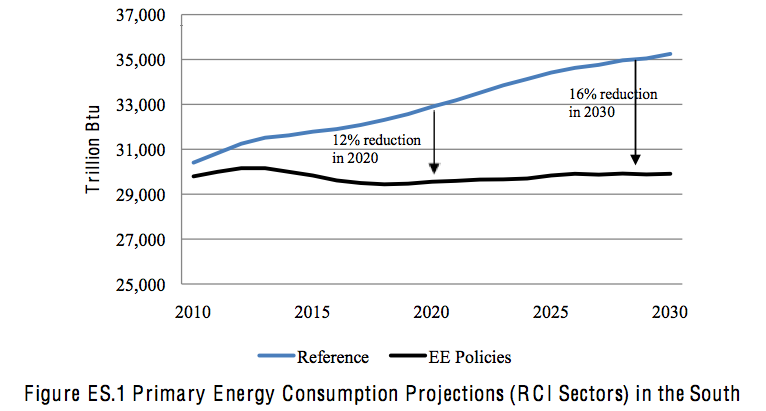
According to a new study, upgrading energy efficiency (new appliance standards, incentives for retrofitting and weatherization, upgrades to utility plants) in the southern US in the next 20 years could:
- Save consumers $41 billion on their energy bills.
- Open 380,000 new jobs.
- Save 8.6 billion gallons of water by 2020.
The South uses more energy per capita than elsewhere in the US and every dollar invested in efficiency there over the next 20 years will reap $2.25 in benefits. Currently, the 36 percent of Americans who live in the south consume 44 percent of the nation’s energy, while supplying 48 percent of the nation’s power. Energy efficiency has lagged in the South, where low electricity rates have encouraged consumption, energy-efficient products have not penetrated the market as much as other parts of the country, and states have spent less per capita on efficiency programs than the national average.
Researchers from Duke U and the Georgia Institute of Technology modeled the interaction of nine efficiency policies for residential, commercial, and industrial energy use over 20 years in the District of Columbia and 16 southern states. They found that without improvements in energy efficiency, the South will use 15 percent more energy by 2030. But aggressive energy efficiency initiatives would:
- Reduce overall utility bills by $41 billion a year in 2020 and $71 billion in 2030.
- Reduce average residential electricity bills by $26 per month in 2020 and $50 per month in 2030.
- Reduce the need for new power plants, retiring nearly 25 gigawatts of older power plants, while avoiding the construction of up to 50 gigawatts of new plants (equal to the amount of electricity produced by 100 power plants).
- Conserve water by reducing power plant capacity, saving the South 8.6 billion gallons of fresh water in 2020 and 20.1 billion gallons in 2030.
The report Energy Efficiency in the South is open access online, including a state-by-state breakdown.














